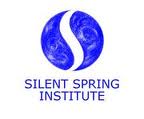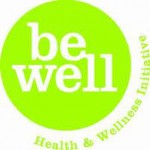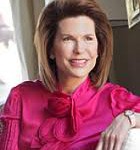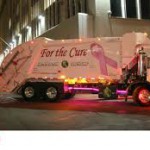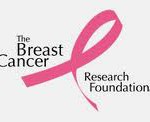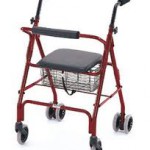If you like this blog, pass it on to 3 or more of your friends. Let’s keep the conversation going.
Feb 3, 2012 Breaking News
It seems that Komen couldn’t take the intense heat and media attention on this one. They announced this morning that they have reversed their position on funding Planned Parenthood. The decision has changed, Komen leadership hasn’t. Nancy Brinker refuses to come clean about what was behind the initial denial of funding. Don’t be fooled. Komen is still right wing.
I swore to myself I would not write about the Susan G. Komen for the Cure Foundation (Komen) again anytime soon. After all, what hadn’t been said already? But Komen has stepped way over the line with its defunding of Planned Parenthood’s breast cancer services. So, here we go.
KFC and Komen: A Warning?
In the spring of 2010, Komen partnered with Kentucky Fried Chicken (KFC) to sell pink buckets of chicken. Nutritionists were outraged: selling unhealthy food to poor people to raise money for breast cancer? Breast Cancer Action launched its “What the Cluck?” campaign in response, encouraging people to contact both Komen and KFC and tell them
what they thought of the partnership. Thousands of people did just that. Even Steven Colbert got into the act with a riff on the campaign and cause marketing in general..
Komen was so roundly criticized for the KFC partnership that you would think they had learned to be careful when they do things that might catch people’s attention. If you thought that, you thought wrong.
What’s New: Komen’s Planned Parenthood Funding Decision
On January 31, 2012, the world learned that Komen had ceased to fund Planned  Parenthood’s breast cancer services; that is, providing clinical exams and mammograms for poor women who otherwise lack access to health care. (That Planned Parenthood calls these “preventive” services is, of course, a misnomer : these kinds of services don’t prevent anything; if they work, they find breast cancer that is already present.)
Parenthood’s breast cancer services; that is, providing clinical exams and mammograms for poor women who otherwise lack access to health care. (That Planned Parenthood calls these “preventive” services is, of course, a misnomer : these kinds of services don’t prevent anything; if they work, they find breast cancer that is already present.)
People are shocked and upset. They should be. What they should not be, however, is surprised.
A Little Komen History
Anyone who has spent any time looking at how Komen works knows that they are the right wing of the breast cancer movement. They are and they stand for the status quo. They push screening when it’s not called for, refuse to acknowledge the limitations of mammograms, support drug companies’ positions at the FDA over the interest of patients, and ignore the realities of breast cancer in favor of pink-a-fying everything in sight.
Here’s a story you may have missed about Komen. Years ago, advocates and activists realized that they had created a federal breast cancer screening program for poor women that guaranteed screening, but no access to treatment if breast cancer were found. A  number of groups went to Congress to fix this problem. The Komen organization opposed the bill: if you’re the Komen Foundation, health care is not human right. The bill passed despite Komen’s opposition.
number of groups went to Congress to fix this problem. The Komen organization opposed the bill: if you’re the Komen Foundation, health care is not human right. The bill passed despite Komen’s opposition.
The right-wing nature of the Komen operation is a direct result of the politics of its well known founder, Nancy Brinker. Ms. Brinker is a long time funder of Republican causes, and was a Bush “Ranger” during the George Bush II era, raising thousands of dollars for his election efforts. That money netted her an
ambassadorship, followed by the position of Chief of White House Protocol.
So, no one should be surprised by the Komen move to stop funding Planned Parenthood. But we should look at the history of Komen’s relationship to the anti-abortion movement, and take a close look at the explanation they give for their decision, because it doesn’t pass the red face test. In fact, they are undercutting their own mission with this decision.
Abortion and Breast Cancer: a Moral Position as a Conflict of Interest
For years, anti-abortion activists have claimed that abortion is a major cause of breast cancer. Though there is no evidence that this is true – see an article in The Source, BCA’s Newsletter — the claim persists. There have even been laws passed in several states requiring that women seeking abortions be counseled that doing so would increase their risk of breast cancer.
For years, these anti-abortion people have criticized Komen loudly for funding Planned Parenthood. Search the web for Komen, abortion, and breast cancer, and you’ll see what I mean. Not because of the breast care that Planned Parenthood provides, but because the anti-abortion people wrongly contend that Planned Parenthood is an abortion mill.
Why would Komen cave now to these wackos? Because they saw an opening that would get the anti-abortion people off their backs, and they took it.
Komen’s Rationale for the Planned Parenthood Decision
Komen spokeswoman Leslie Aun told the press that it wasn’t abortion politics that drove the decision. Rather, it was a newly adopted Komen rule that prohibits grants to organizations that are under investigation by any legal authority.
Since that statement, no one from Komen has given a press interview. But, in classic Komen style, they released an online video of founder Nancy Brinker “setting the record straight,” so they could try to tell their version of events without facing questions. If you can stand it, take a look. Judge for yourself. It’s interesting to me that Ms. Brinker calls the accusations “scurrilous.” That’s usually her mode. Attack the accusers and ignore the underlying issues.
So what’s the real story on the investigation that has been used as an excuse to cut off Planned Parenthood funding? It’s this: Planned Parenthood is being investigated by Cliff
Stearns, Republican Congressional Representative from Florida. Are you surprised to learn that Mr. Sterns has a perfect anti-abortion voting record? What do you think prompted his investigation of Planned Parenthood? Dollars to donuts it’s the abortions they provide.
So, Komen adopts a new rule that happens fall right into the anti-abortion snare set by Cliff Sterns. That’s not abortion
politics? I’m Fred Astaire.
Komen: Undermining Their Own Mission
Komen, as I have written before, is all about screening for breast cancer (see “Don’t Make Promises You Can’t Keep — Especially in Health“). In their efforts to promote screening, Komen has a particular focus on the medically underserved; that is, women who don’t have access routine health care services.
Planned Parenthood affiliates have provided breast screening services to many thousands women who would otherwise not have this care. That advances Komen’s mission. Who will provide these services now? Komen won’t.
The Komen decision was made a day after the CDC announced that screening rates for breast cancer were down, especially among poor women.
Komen has undercut not only its own mission, but the public’s perception of who they are. It’s about time.
Don’t Just Stand There, Do Something
If you’re as outraged as you should be, there is something you can do. Write to the of the Komen Foundation, and tell them what you think of pulling the funding from Planned Parenthood. And get your friends to do the same. Komen won’t talk to the press. Let’s talk to Komen. Liz Thompson is the CEO (sounds corporate, doesn’t it?) of Komen, and he email address is: EThompson@komen.org.
After you do that, go to Breast Cancer Action’s website and sign their petition to Nancy Brinker and Liz Thomson. There is power in numbers.
© Barbara A. Brenner 2012



















